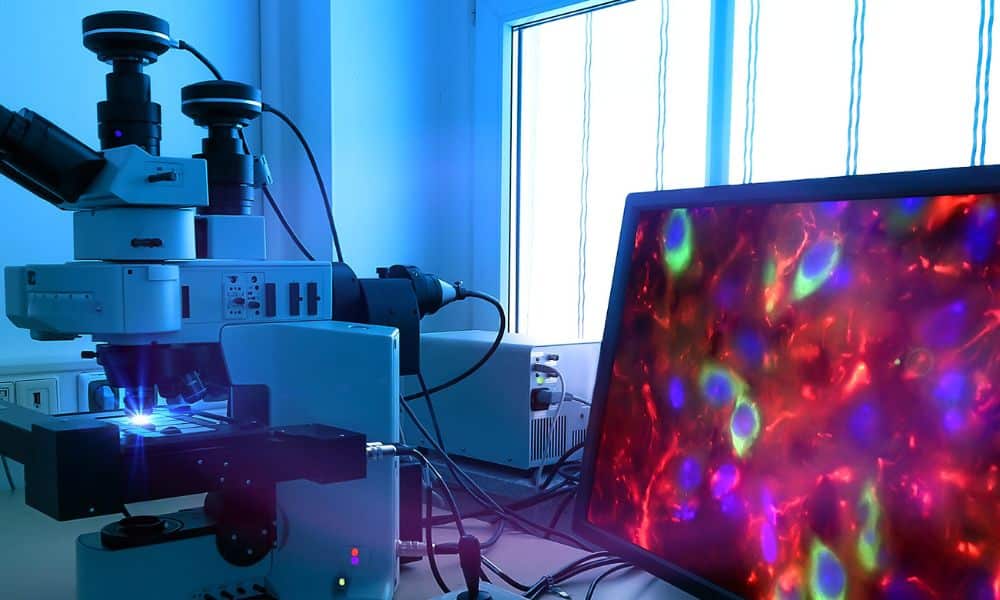Confocal microscopy is a widely recognized technique used in various industries like biotechnology, materials science, and even art restoration. The advent of a new technology, Re-scan confocal microscopy, has provided researchers with an effective tool to obtain high-resolution images. Learn more about three significant advantages of this technique that make it an indispensable tool for researchers.
What Is Re-Scan Confocal Microscopy, and How Does It Work?
Re-scan confocal microscopy (RCM) is an advanced imaging technique that combines the principles of traditional confocal microscopy with the re-scanning of fluorescence light. RCM involves collecting emitted light from a sample and focusing it onto the detector through the use of a re-scanning unit, which contains two sets of mirrors: one for scanning the sample and another for re-scanning the emitted light. This additional step of re-scanning significantly enhances the quality of the acquired images, making it ideal for certain applications in which detailed imaging is essential.
Enhanced Resolution
The re-scanning mechanism present in RCM enables the acquisition of high-resolution images, presenting an advantage over traditional confocal microscopy. RCM has successfully improved resolution from 290 nm to 170 nm, improving by a factor of 1.4 the resolution of the raw images. This resolution improvement can be pushed further by deconvolving the dataset, reaching a resolution down to 120 nm. This improved resolution is particularly valuable in fields like cell biology, where fine cellular details can now be resolved.
Reduced Photodamage and Photobleaching
Photobleaching and photodamage are common concerns during fluorescent imaging, as they can significantly affect the sample researchers are studying. RCM reduces these problems by allowing for lower laser power during the scanning process.
RCM is very light efficient, using only a few optical elements and a pinhole opened at 1 AU, since closing down the pinhole is not required to improve the resolution.
Furthermore, RCM is the only point-scanning confocal system using a camera as a detector, and sCMOS cameras are known to have much higher quantum efficiency than PMT and HyD detectors used by traditional point-scanning confocal microscopes. RCM is about 3-5x more sensitive than a regular confocal microscope.
This reduced photobleaching increases the sample’s viability, allowing for longer observation durations and more accurate data collection.
Ease of Use and Affordability
Less is more. First, you select which channel you want to use (DAPI, GFP, TexasRed, Cy5, …), second, you adjust the laser power, and third, you select the field of view. That’s it; you acquired a super-resolution high-sensitivity image.
RCM is very easy to use as most of the parameters in a traditional confocal microscope are related to the use of PMT or HyD detectors. Using a camera simplifies it to the maximum so that you can resolve previously unseen details within three clicks.
And because RCM is very light-efficient and does not require fancy components to achieve super-resolution and high sensitivity, it does not hurt your budget either. RCM is an add-on compatible with most sCMOS cameras, so should you already have a microscope and a camera, you can save on both and upgrade to confocal super-resolution for less than $100k.
Re-scan Confocal Microscopy offers researchers these three advantages and more over traditional confocal microscopy. RCM laser scanning microscopes provide enhanced image quality, reduced photodamage and photobleaching, and improved resolution and sensitivity. These benefits make RCM a vital tool in scientific investigations and various industries, contributing to advancements and breakthroughs in these fields. By adopting RCM technology in research, scientists can expect better imaging results and more accurate data for their analyses, helping further our understanding of various scientific phenomena.

